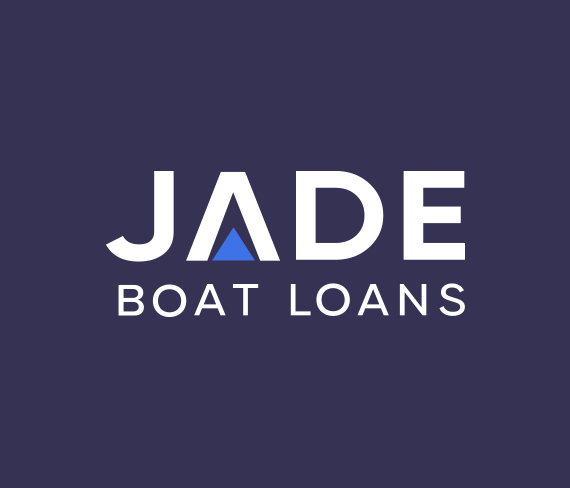If you're buying your first boat, congratulations! Boating is a great recreation and sporting activity which can be enjoyed by many people. Boats are available across a vast price range so most boat buyers can find a boat that suits their budget and their boating style. But if you're entering the exciting world of boating for the first time, you may be taken aback by some of the terminology used around boats.
To assist Jade Boat Loans customers to grasp some of the basics terms about boats and boat loans, we’re providing this summary of a selection of commonly-used references you’re likely to come across. For more detailed information and more thorough coverage, a glossary of boating terms can be accessed via many platforms. Check your state marine authority website or boating reference guides. Click here for the Australian Maritime Safety Authority.
Know Your Boat
Yes, it can be perceived that the boating and marine industry have their own language. The terms used can be confusing and power and sailboats often have different names for the same part of a boat. Here are a few basics to get you started.
- Aft: the rear section of the boat can include aft cabins which are sleeping quarters located at the rear.
- Stern or astern: the back of the boat or towards the back of the boat
- Bow: the forward section or front of the boat
- Beam: the width of the boat at the widest part.
- Port: the marine reference for left
- Starboard: the marine reference for the right
- Transom: the rear where an outboard motor is attached and often a swim platform is located. Swim platforms also referred to as ‘duck board’
- Bimini: canopy over a flybridge or open boat. Usually removable and retractable
- Lee: the direction the wind is blowing
- Outboard/inboard: boats can have an outboard motor that is attached to the rear or an inboard engine.
- Keel: the length and lowest section of the hull
- Hull: the boat body that actually rests in the water
- Galley: the cooking area or kitchen
- Berth: sleeping spaces on a boat and also a place where boats are moored at a marina
- Draft: the distance down that a boat extends into the water. Important to know when boating in particularly shallow waters.
- Cockpit: the crew area and area where the skipper operates/steers the boat
- Bail: removing water that has come into the boat
- Wake: waves that a boat creates when moving through water. Signage may indicate to ‘reduce wake’ which usually requires reducing speed
- Make fast: secure the boat usually with a line or anchor
- Fender: the protection device which is attached to the outside to prevent damage when moored at a wharf or rafted up with another boat
- Bearing: direction from the boat to a specific point
- Deadrise: a measurement in degrees of a V-shaped hull angle applicable to ‘planing’ powerboats and measured at the transom
- Buoy: a floating marker, usually anchored. Can be a navigation sign or a boat anchor.
- Channel: a waterway, usually narrow but passable by boats. Channel markers will often indicate boat directions.
There is plenty more to know but that should get you started when speaking with boat dealers and sellers and you’ll hopefully be more knowledgeable if attending an upcoming boat show. Click on the link to learn more about maritime terms.
Know What You’re Buying
When buying a boat, you need to know what you’re buying. What? That sounds a bit basic but it is relevant. Boats can be offered for sale in different configurations and the way you purchase may impact how you approach your boat loan.
- Boat/hull only: this can be a bare boat which may be an aluminium or fibreglass hull without the motor or engine. If buying boat and engine separately, talk to us about how we can combine both purchases into one boat loan.
- Boat and motor: inboards typically come with an engine already installed but with some luxury motor yachts, buyers often get a choice of which engine they would prefer. Outboard motorboats can be sold with boat and motor as separate items or as a complete package.
- Boat and trailer: trailer boats can be sold as separates or as a package deal. Buying together can be economical and Jade can include both in your one boat loan.
- Boat, motor and trailer: this is a complete package deal and a typical offering from boat dealers. It allows boat buyers to purchase their entire boating package with our new boat finance and used boat loans.
- Sailing boats and yachts can be sold with or without sails and rigging.
- Options and extras: when buying a new boat from a manufacturer or dealer, most will offer a range of options, accessories and extras. It is up to individual buyers to decide what they would like to include/add to their purchase, based on their individual boating requirements. By including options such as biminis and canopies, electronics, fishing gear and accessories and other accessories in the original purchase, provides the opportunity to include all in the one boat loan. If you choose to buy after-purchase, these can’t be added to the loan after the loan contract is settled.
- Marine insurance: when taking out a loan to purchase your boat you will be required to take out an insurance policy. Marine insurance policies differ in regard to what is and isn’t included. Read the details closely and ensure you have the coverage you want.
To see how your boat loan may vary depending on what configuration you are considering and what options and accessories, use our Jade boat finance calculator. Vary the loan amount to include/exclude various items and see how the repayments differ. Your Jade consultant can assist with quotes for whatever configurations you are considering for sail and power boats.
Contact us on 1300 000 003 for a finance quote.
DISCLAIMER: THE INFORMATION AND SPECIFIC DETAILS CONTAINED IN THE CONTENT OF THIS ARTICLE HAVE BEEN PREPARED AND ARE PRESENTED PURELY AS GENERAL INFORMATION AND NOT INTENDED AS THE ONLY SOURCE OF FINANCIAL ADVICE FOR BOAT BUYERS AND LOAN BORROWERS. FOR THOSE THAT CONSIDER THEY REQUIRE SPECIFIC ADVICE, THEY SHOULD CONSULT WITH A FINANCIAL ADVISOR. LIABILITY IS NOT ACCEPTED IN REGARD TO ERRORS AND MISPRESENTED DATA AND DETAILS HEREIN.

 "
alt="">
"
alt="">